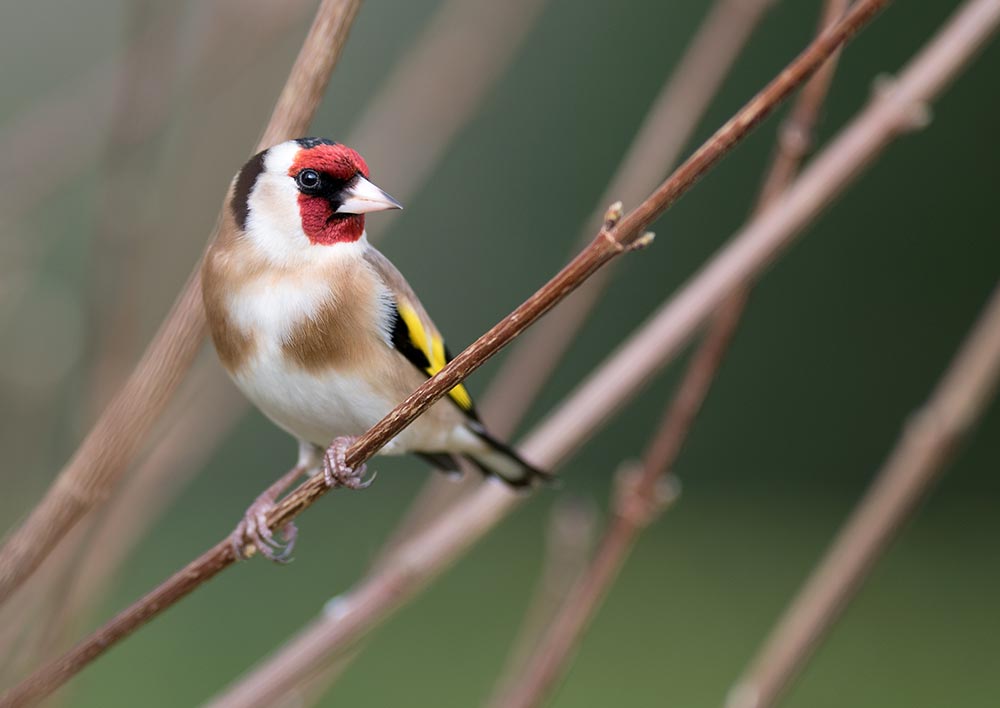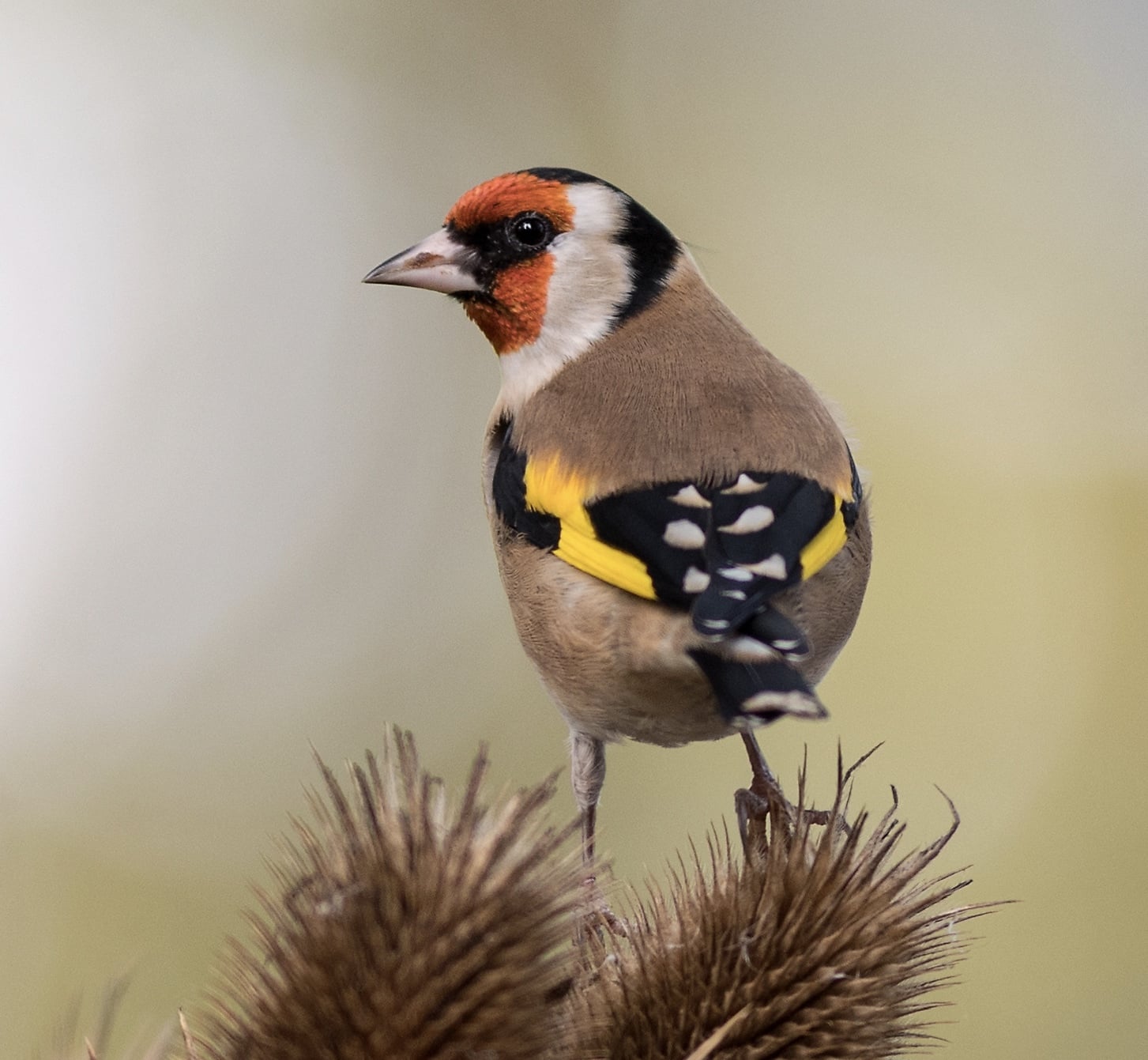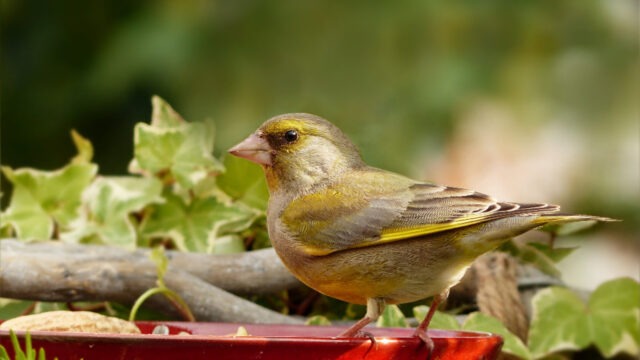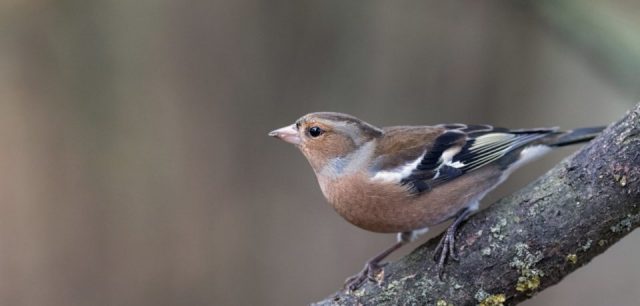Overview
Goldfinches are sociable birds and can often be seen in small groups or feeding in larger flocks, especially towards the end of the breeding season in autumn. They often breed in loose colonies, favoured habitats including deciduous and mixed woodland, orchards and gardens. The goldfinch can be found in Britain all year round but is more numerous in southern England, in particular lowland regions. Winter numbers are much lower in Britain as many migrate south to southern Europe and north Africa at this time. Whilst it does eat insects in summer as do most finches, the goldfinch’s’ speciality is eating small seeds such as thistles, burdock, teasel and weed seeds with its delicate fine bill designed for the job. The female builds a tiny delicate nest usually high in a tree, often among the thinner outer branches, woven with moss, lichen and leaves it is extremely well camouflaged and difficult to spot. If nesting in gardens they like fruit tree branches.
Description
Goldfinches are a colourful and rather exotic-looking bird, with their striking red, black and white head and black wings with a bold golden yellow wing-bar. The back and upper breast are a warm fawny-brown, rump white and tail black tipped with white.
This combination of bright colours and markings, especially the red face and yellow on the wings, makes the adult goldfinch distinctive and difficult to confuse with any other garden bird. They are small slender finches with a short forked tail and fine pointed light-coloured bill. The sexes are almost identical in appearance.
Call & Song: The goldfinch’s call is a light cheery chirpy bubbly ‘tickelit’… the song a quiet fluid medley of twitters and more rapid trills.
Latin name: Carduelis carduelis
Size: 12 – 13 ½ cm
In The Garden
Whilst a common British bird, the goldfinch is not as common as the chaffinch (Fringilla coelebs) but is still frequently seen in gardens and comes quite readily to feeders. To attract them you could put out a niger feeder – niger is a tiny black seed of the sort that goldfinches like to eat, but don’t put niger seed into a regular bird feeder for bigger seed as it will all fall out of the bigger holes! If you are very lucky this type of feeder might also attract the odd siskin, linnet or redpoll… other rather scarcer small seed eating finches. Goldfinches are now coming to feeders and tables in peoples’ gardens more than they used to and it is possible that this extra food source might be encouraging more goldfinches to stay here over winter instead of travelling south. Saves on a few air-miles which can’t be a bad thing I guess! If you have space plant an area of your garden with teasel (Dipsacus fullonum) or perhaps allow an area to grow and set seed with burdock (Arctium sp.) or thistle and other wildflowers. These plants are also a valuable nectar source for bees. As they are not tree-hole nesters goldfinches do not usually use nestboxes.
There’s no doubt that goldfinches are charming colourful and beautiful little finches… a gem to have in your own garden.
Did You Know?
A flock of goldfinches is known as a ‘charm of Goldfinches’… rather appropriate!




